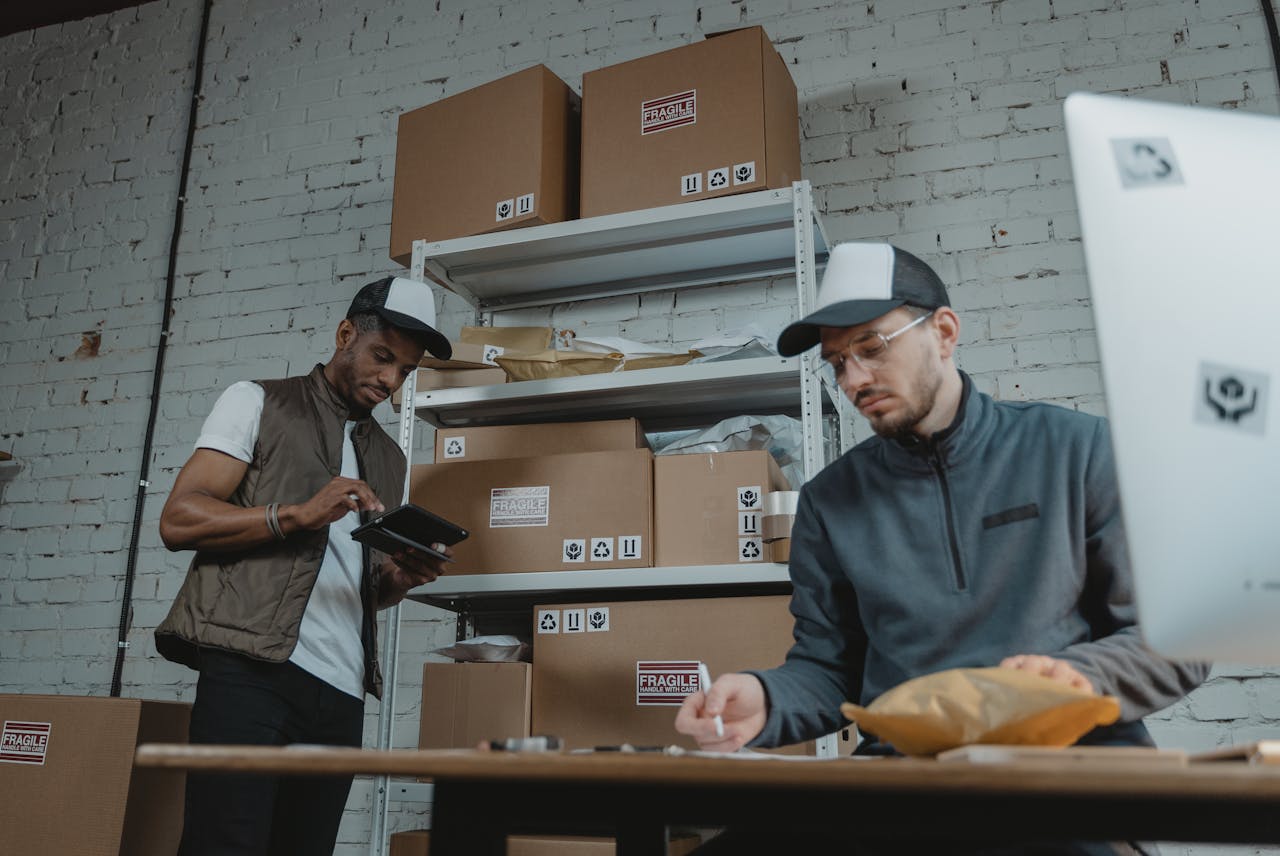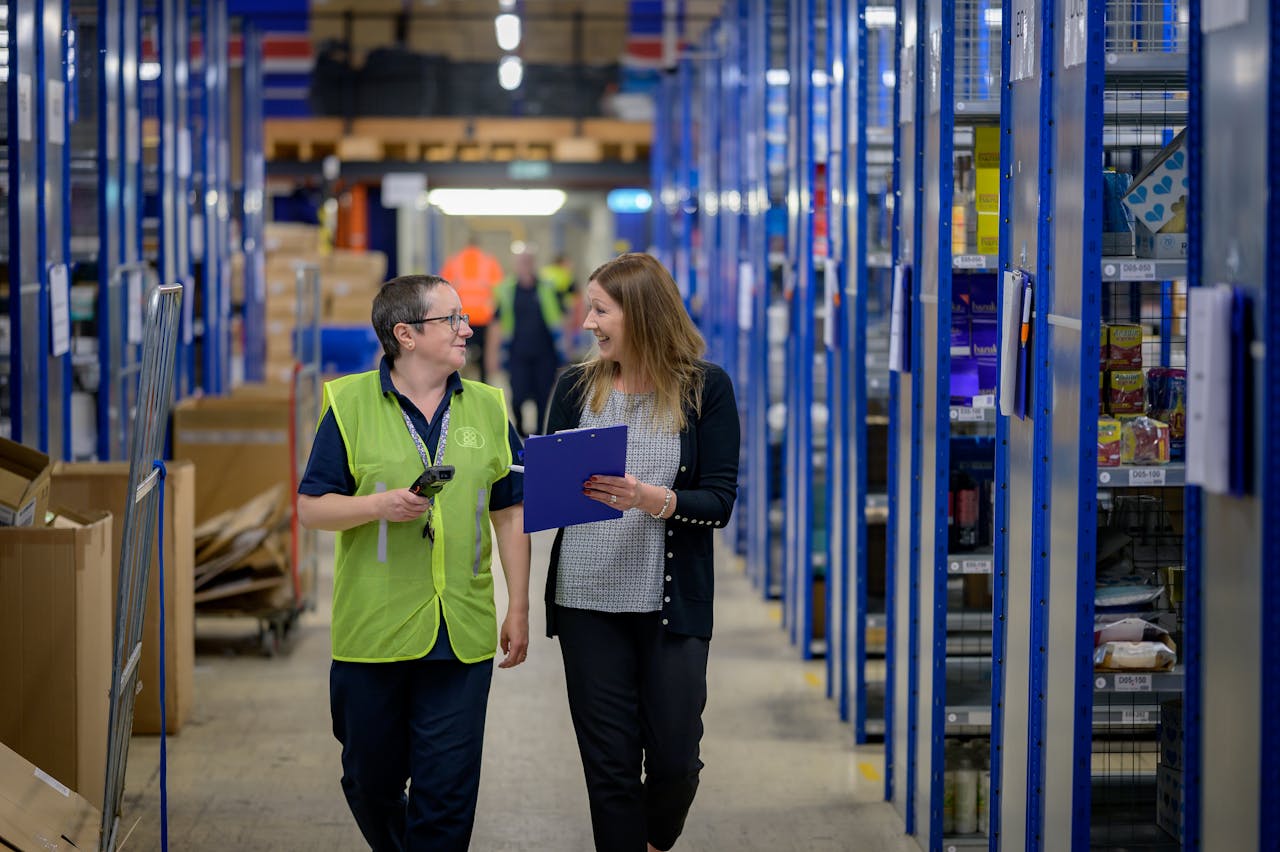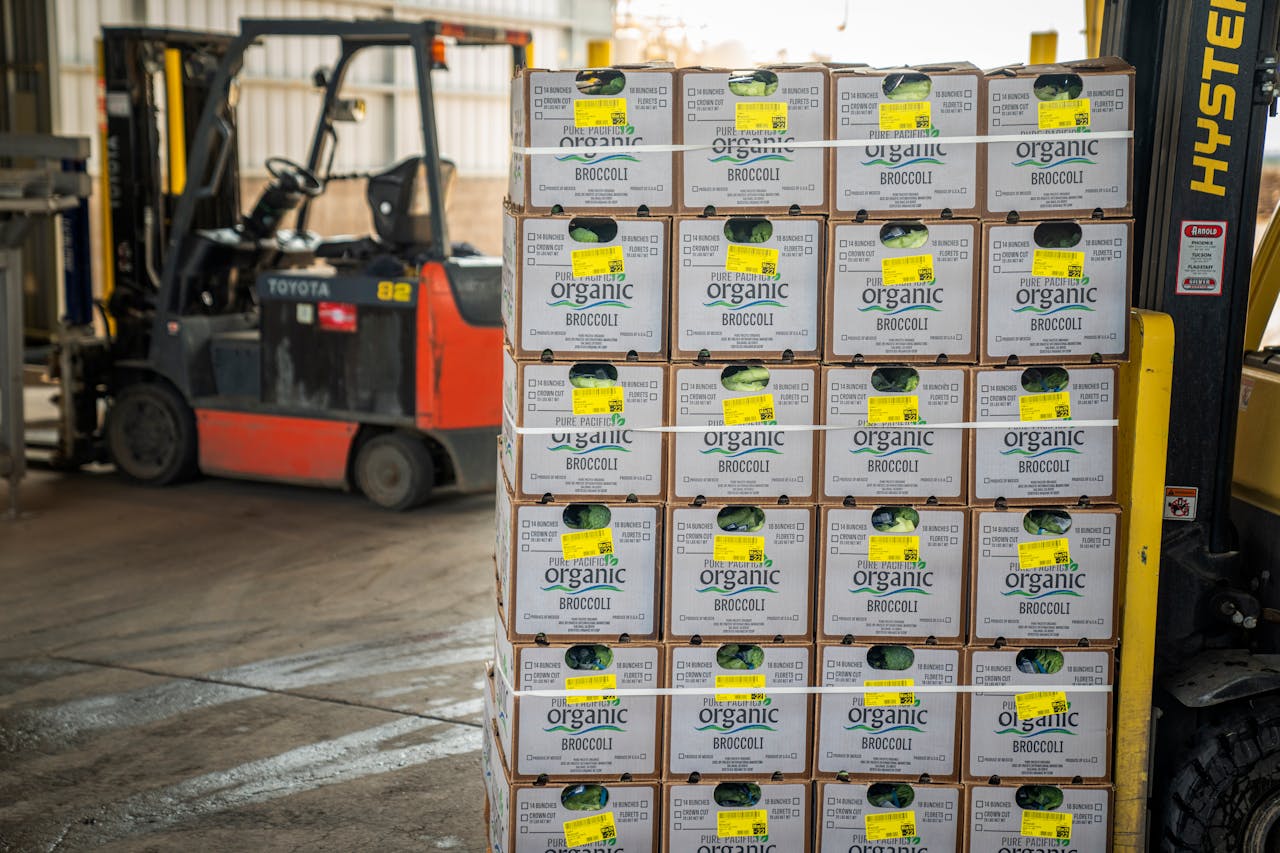Choosing the right order fulfillment software can make a big difference in how smoothly your business runs. With so many tools out there, it’s not just about picking the most popular one; it’s about finding a solution that fits the way your business operates.
The right software helps you stay on top of inventory, avoid shipping mistakes, and keep things organized as your business grows. In this guide, we’ll break down some of the best options available so you can find a system that simplifies your process and supports your long-term goals.
Understanding Order Fulfillment Software
Order fulfillment software helps you manage each step of the order process, from keeping track of inventory to getting packages out the door. It takes care of tasks like processing orders, coordinating with the warehouse, and organizing packing, all in one system.
By automating these steps, you cut down on mistakes, improve fulfillment speed, and get orders out faster. It’s especially useful for businesses handling lots of orders since it keeps your stock accurate and your deliveries on schedule.
Top 8 Best Order Fulfillment Software

1. Fullex Global – Flexible Fulfillment Built for DTC Brands
Fullex Global is a product sourcing and fulfillment partner with full-service warehouses in both China and the U.S. Their setup allows brands to ship directly from China at a lower cost or store inventory in the U.S. for faster 2–4 day delivery. This hybrid approach gives businesses the flexibility to balance affordability with speed, depending on their customer base.
The platform connects with major ecommerce platforms like Shopify, Amazon, and Etsy, syncing orders, inventory, and tracking in real time. Fullex offers flat-rate pricing with no long-term contracts, making it easy for small and growing brands to get started. They also support custom packaging options to help maintain a consistent brand experience.
Pros
- Cost-effective international sourcing with fast U.S. fulfillment
- Seamless integration with major ecommerce platforms
- Transparent pricing and no long-term commitments
- Offers branded packaging for a better customer experience
Cons
- International warehousing beyond China and the U.S. is currently limited
2. ShipwithMina – Smart Fulfillment with AI
ShipwithMina uses artificial intelligence to speed up order processing and reduce errors during packing and shipping. It also manages its own shipping routes, which helps cut delivery times and lower costs. Once you connect your store, ShipwithMina handles everything from receiving orders to getting them delivered.
This setup works especially well for growing ecommerce brands that want to scale without hiring a full logistics team. The platform focuses on automation, visibility, and reliable delivery. Smaller stores might find the system more advanced than they need, but for mid-sized businesses looking to grow, it's a solid choice.
Pros
- Reduces fulfillment mistakes with AI
- Lower shipping costs thanks to internal delivery routes
- Connects easily to major online stores and carriers
Cons
- Might be too complex for small or new stores
- Setup could take time if you're unfamiliar with fulfillment tools
3. Linnworks – One Dashboard for All Your Channels
Linnworks brings together your inventory, orders, and shipping across different platforms into one easy-to-use dashboard. It tracks stock levels in multiple warehouses and automatically assigns the best shipping carriers based on your past preferences.
While it's packed with useful features, getting set up can take a bit of time. It’s best for businesses that sell on multiple channels and need strong inventory controls. Once you’re used to the system, it helps automate repetitive tasks and keeps your entire fulfillment process organized.
Pros
- Great for managing multi-channel selling
- Prevents overselling with real-time stock tracking
- Learns your shipping habits for faster carrier choices
Cons
- Takes time to set up and learn
- Interface may feel complicated at first
4. Zoho Inventory – Simple and Straightforward
Zoho Inventory gives you a clear view of what’s in stock, where your orders are, and what needs to ship next. It syncs your inventory across all your online stores, so you’re never guessing what’s available. It also helps generate packing slips and tracking numbers automatically.
This tool is great for small to medium-sized businesses that want something reliable without needing too many custom features. It’s easy to use and does a good job of keeping things organized, though it may not scale as well if you have complex operations or a large volume.
Pros
- User-friendly interface
- Syncs well across multiple sales platforms
- Automatically handles packing and tracking
Cons
- Lacks advanced features for larger businesses
- Limited customization options
5. ShipStation – Reliable and Easy to Use
ShipStation pulls orders from all your stores into one place, so you can manage shipping more easily. You can create shipping labels in bulk, track orders, and set up rules to save time. It also offers discounted rates with carriers like USPS and UPS.
It works well for small to mid-sized businesses that want to automate the boring parts of shipping. While there can be occasional syncing delays or setup confusion, most users find it easy to work with once everything is connected.
Pros
- Centralizes all your shipping tasks
- Offers shipping discounts
- Supports hundreds of integrations
Cons
- Occasional sync issues
- Bulk shipping setup can take a bit to learn
6. ShipMonk – Built for Fast-Growing Brands
ShipMonk is made for ecommerce businesses that are growing quickly and need a fulfillment partner that can keep up. It updates inventory in real time and provides detailed insights on sales and stock levels. With warehouses in the US, UK, and Canada, your customers get their orders faster.
The platform is powerful, but it’s best suited for businesses with consistent order volume. While some users mention delays during peak periods, many find it reliable for managing high-volume logistics without having to build their own warehouse team.
Pros
- Real-time inventory tracking
- Multiple warehouse locations for faster shipping
- Helpful reporting and analytics
Cons
- Customer support can be hit or miss
- May be too advanced for small-scale sellers
7. ShipBob – Easy Global Fulfillment
ShipBob stores your products in its network of warehouses and handles everything from picking to delivery. You can also customize your packaging to match your brand. It connects well with platforms like Shopify, Etsy, and Walmart, helping your orders move smoothly.
This is a great option for brands looking to reach international customers without managing their own logistics. It’s not the cheapest solution, and some users mention slower processing during returns, but overall, it’s known for speed and ease of use.
Pros
- Warehouses across multiple regions
- Offers branded packaging options
- Seamless integration with online stores
Cons
- Costs can add up
- Limited control over specific fulfillment steps
8. GetResponse – Marketing and Fulfillment in One
GetResponse is known for its email marketing tools, but it also includes basic order fulfillment features. You can manage promotions, send shipping updates, and run marketing campaigns all from one place. It’s helpful for keeping customers informed while automating the follow-up process.
It’s best for small businesses that are already using email marketing and want to add simple order management. If you need a full-scale fulfillment solution, this might not be enough, but it’s a handy all-in-one tool for light logistics and engagement.
Pros
- Combines email marketing with order tracking
- Easy to use and affordable
- Good for small shops running promotions
Cons
- Fulfillment tools are basic
- Limited shipping carrier options
Selection Criteria for Order Fulfillment Software

1. Handling Orders, Stock Tracking, and Warehouse Workflow
You want software that can handle orders without missing a beat. It should update your inventory in real time and keep everything moving smoothly in your warehouse, from picking and packing to getting the right items to the right place. The best tools help you stay ahead of demand, avoid running out of stock, and prevent overordering.
2. Managing Shipments, Carrier Partnerships, and Product Returns
Good fulfillment software should take the stress out of shipping. That means auto-generating shipping labels, checking delivery addresses, and helping you compare rates across different carriers so you don’t overspend. Returns should also be easy to manage, with features that help you restock items and handle customer requests without the usual chaos.
3. Reporting Insights and Multi-Platform Order Handling
You need clear data to grow your business. Look for software that gives you insights into what’s selling, what’s slowing down, and how your stock levels are changing. If you sell on multiple platforms, like your website, Amazon, or Etsy, your tool should bring all those orders into one simple dashboard so you’re not juggling between tabs.
4. Managing Customers, Suppliers, and Workflow Automation
Good fulfillment software should take repetitive tasks off your plate. That means reordering stock automatically when levels run low, assigning items to the right shelf or bin, and keeping your customers in the loop with real-time updates. Built-in tools like barcode scanning and RFID help reduce mistakes and speed up order processing. Some platforms even handle inventory syncing and multi-channel fulfillment in the background, so things stay organized without constant oversight.
5. System Integration and User Permission Controls
Make sure the software plays well with the tools you already use, like your online store, accounting software, or CRM. It should also give you control over who sees what, so your team can do their jobs without risking sensitive data falling into the wrong hands.
6. Providing Real-Time Customer Updates
Customers like to know what’s going on with their orders. A good fulfillment platform sends out automatic updates when an order is placed, shipped, and on its way. These alerts help build trust, keep customers in the loop, and save your support team from answering the same questions all day.
Frequently Asked Questions

1. What is the typical cost range for order fulfillment software?
Order fulfillment software pricing can vary a lot depending on the size of your business, how many orders you handle, and what kind of features you need. Basic plans for small businesses usually start around $50 per month. Mid-sized or growing ecommerce businesses often pay between $500 and $1,500 per month for more robust tools. If you’re looking for something custom or enterprise-level, the cost can go even higher.
It’s also important to consider extra fees that might come up. Some providers charge for setup, warehouse storage, or even per-order processing. These costs can sneak up and impact your budget. Always check the fine print so you know the full financial picture before signing up with a provider.
2. Which fulfillment platforms offer two-day shipping options?
If fast delivery is a top priority, some fulfillment companies offer two-day shipping depending on warehouse locations and carrier partnerships. Amazon’s FBA service gives sellers access to Prime shipping speeds, which can be a big plus for reaching that customer base. Fullex Global, ShipBob, and ShipMonk also support fast delivery thanks to their multiple U.S. fulfillment centers and tech-backed logistics systems.
These platforms often use advanced inventory routing and shipping automation to speed things up. That said, delivery time still depends on where your customers are located and the carrier being used, so it’s always good to double-check coverage in key areas before committing.
3. What are the essential steps in fulfilling an order?
The fulfillment process starts the moment an order comes in. You’ll first verify the order, confirm payment, and make sure the items are in stock. Then the system logs the shipping details and sends the customer a confirmation email.
From there, the items are picked and packed in the warehouse. The package is labeled and handed off to a shipping carrier. At this point, customers usually get a tracking link. If the customer returns an item, the process works in reverse with inspection, restocking, and a refund if needed.
4. What benefits does using order fulfillment software bring?
Fulfillment software helps automate repetitive tasks and cut down on errors. Instead of entering orders manually or tracking inventory in spreadsheets, everything is synced in real time. This keeps your stock counts accurate and helps prevent overselling or delays.
It also improves the customer experience. Orders go out faster, tracking is reliable, and returns are easier to manage. If you sell across multiple channels like Shopify, Amazon, and eBay, the software pulls everything into one dashboard. That kind of visibility makes it easier to grow your business without adding chaos.


